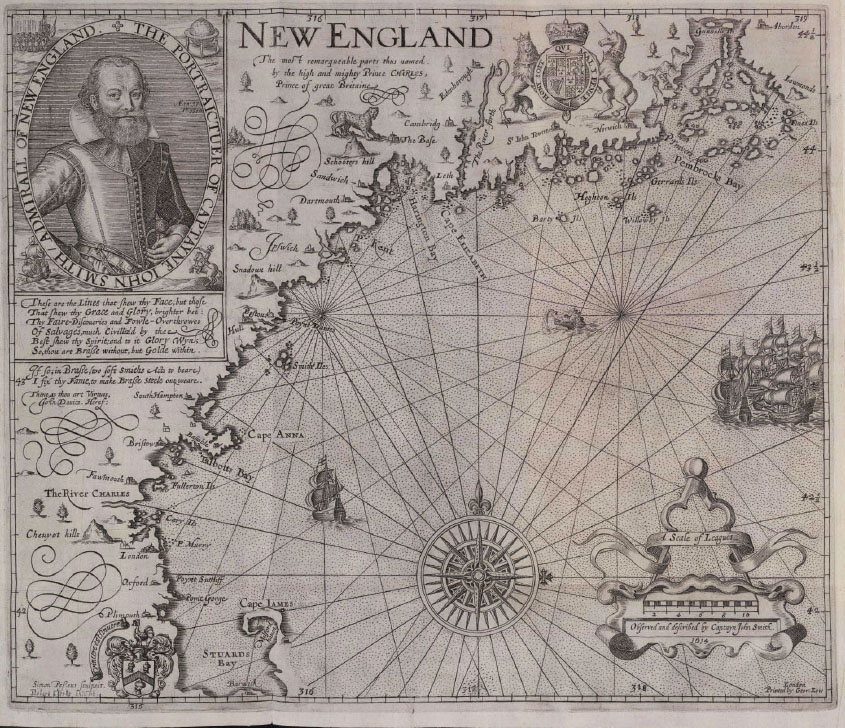Exploring American Histories: Printed Page 50
Exploring American Histories, Value Edition: Printed Page 44
The Puritan Migration
As the Pilgrims gradually expanded their colony during the 1620s, a new group of English dissenters, the Puritans, made plans to develop their own settlement. As religious dissenters, Puritans faced persecution in England. However, persecution was only one reason the Puritans chose to leave England. They believed that their country’s church and government had grown corrupt and was being chastened by an all-powerful God. During the early seventeenth century, the English population boomed but harvests failed, the poor suffered from famine and rising prices, the number of beggars multiplied, and crime and taxes rose. The enclosure movement, in which landlords fenced in fields and hired a few laborers and tenants to replace a large number of peasant farmers, increased the number of landless vagrants. At the same time, the English cloth industry nearly collapsed under the weight of competition from abroad. In the Puritans’ view, all of these problems were divine punishments for the nation’s sins.

Thus, from the Puritans’ perspective, New England was a safe haven from God’s wrath. Puritan lawyer John Winthrop claimed that God offered New England as “a refuge for manye, whom he meant to save out of the general destruction.” Consequently, under his leadership a group of affluent Puritans sought and received a royal charter for the Massachusetts Bay Company. To the Puritans, however, New England was more than just a place of safety. Unlike the Pilgrims, they believed that England and the Anglican Church could be redeemed. By prospering spiritually and materially in America, they could establish a model “City upon a Hill” that would then inspire reform among residents of the mother country.
About one-third of English Puritans chose to leave their homeland for North America. They were better supplied, more prosperous, and more numerous than either their Pilgrim or Jamestown predecessors. Arriving in an armada of seventeen ships, the settlers included ministers, merchants, craftsmen, and farmers. Many Puritans sailed with entire families in tow, ensuring the rapid growth of the colony. Having seen the risks of settling in unhealthy or unknown locales, they studied John Smith’s map of the New England coast to select the best site for their community.
The first Puritan settlers arrived on the coast north of Plymouth in 1630 and named their community Boston, after the port city in England from which they had departed. Once established, they relocated the Massachusetts Bay Company’s capital and records to New England, thereby converting their commercial charter into the founding document of a self-governing colony. They instituted a new kind of polity in which all adult males participated in the election of a governor (John Winthrop), deputy governor, and legislature. Although the Puritans suffered a difficult first winter, they quickly recovered and soon cultivated sufficient crops to feed themselves and a steady stream of new migrants. During the 1630s, some eighteen thousand Puritans migrated to New England, fourteen thousand of those to Massachusetts. Even without a cash crop like tobacco or sugar, the Puritan colony flourished.
Eager to take advantage of the abundant land, the close-knit community spread quickly beyond its original boundaries. The legislature, known as the General Court, was thus forced early on to develop policies for establishing townships with governing bodies that supported a local church and school. By the time the migration of Puritans slowed around 1640, the settlers had turned their colony into a thriving commercial center. They shipped codfish, lumber, wheat, rye, oats, pork, cheese, and other agricultural products to England in exchange for cloth, iron pots, and other manufactured goods and to the West Indies for rum and molasses. This trade, along with the healthy climate, relatively egalitarian distribution of property, and more equal ratio of women to men, ensured a stable and prosperous colony.
Puritans also sought friendly relations with some local natives; in their case it was with the neighboring Massachusetts tribe, who were longtime enemies of the Pilgrims’ allies, the Wampanoags. Many Puritans hoped that their Indian neighbors could be converted to Christianity. Such efforts were made easier by the death of many of the Massachusetts tribe’s religious leaders in the Pilgrim attack of 1623. Puritan missionaries taught their pupils how to read the Bible, and a few students attended Harvard College, founded in 1636. In an effort to wean converts from their traditional customs and beliefs, missionary John Eliot created “praying towns.” There Christian Indians could live among others who shared their faith while being protected from English settlers seeking to exploit them. Yet most “praying Indians” continued to embrace traditional rituals and beliefs alongside Christian practices.
